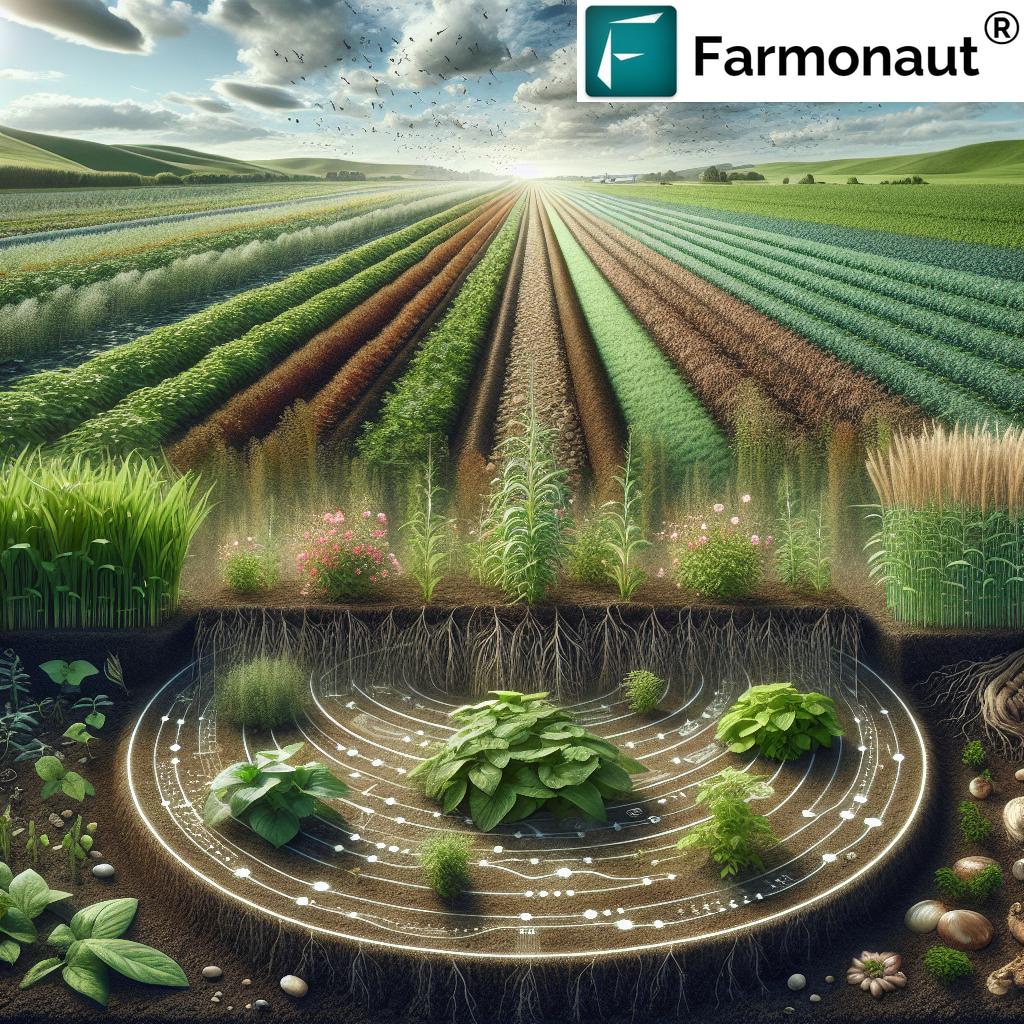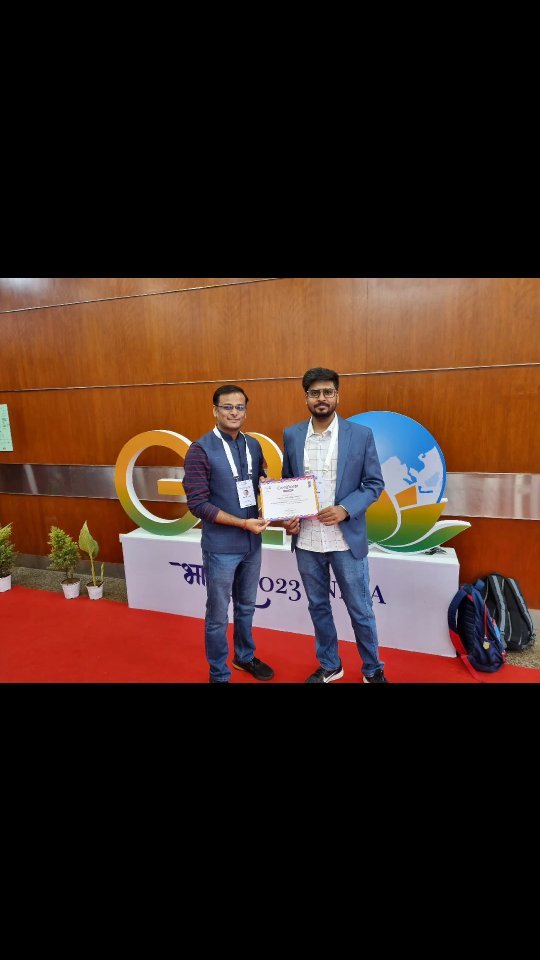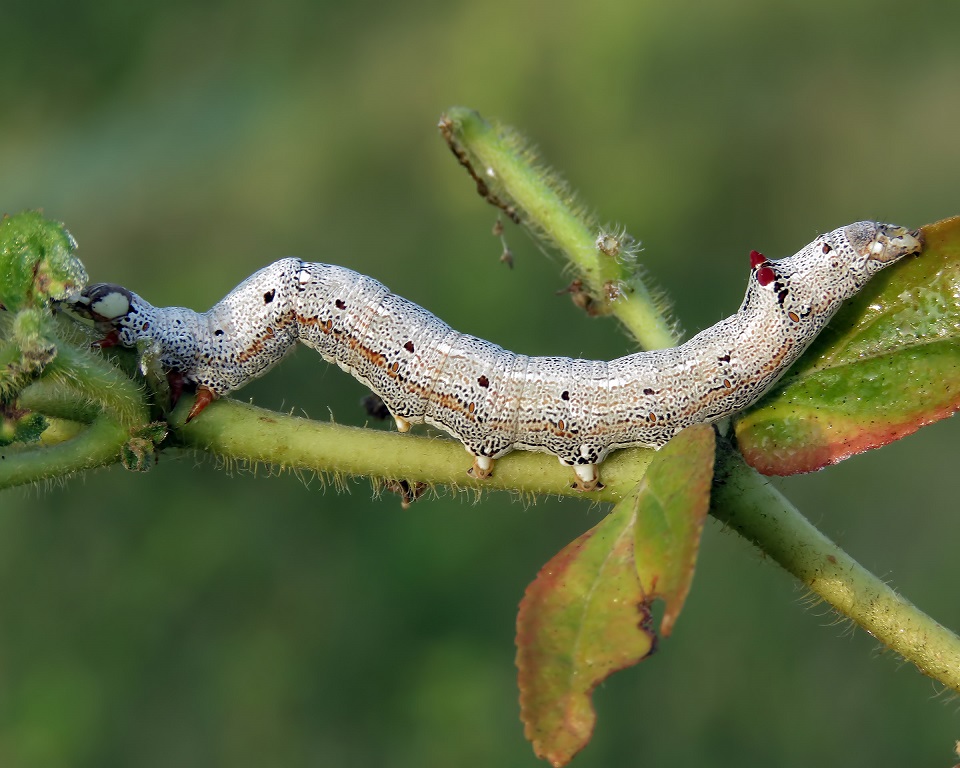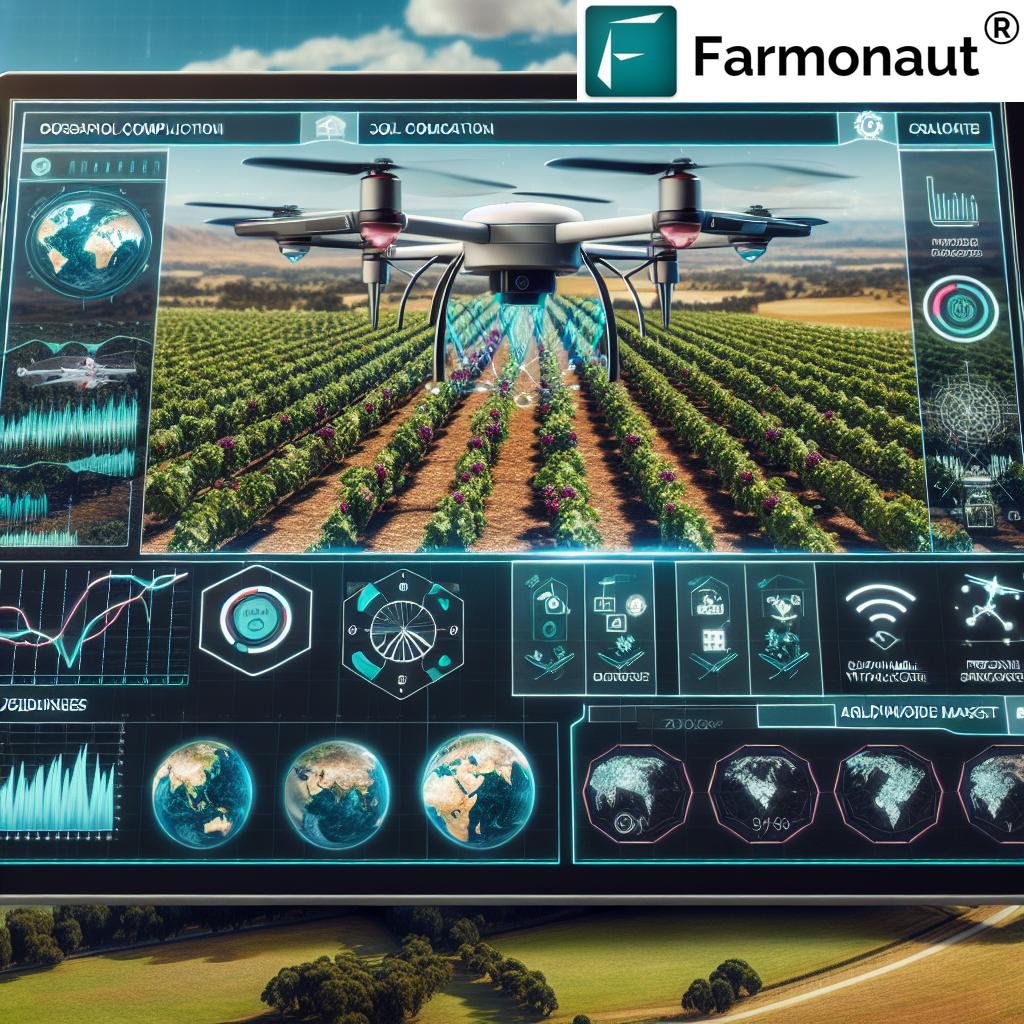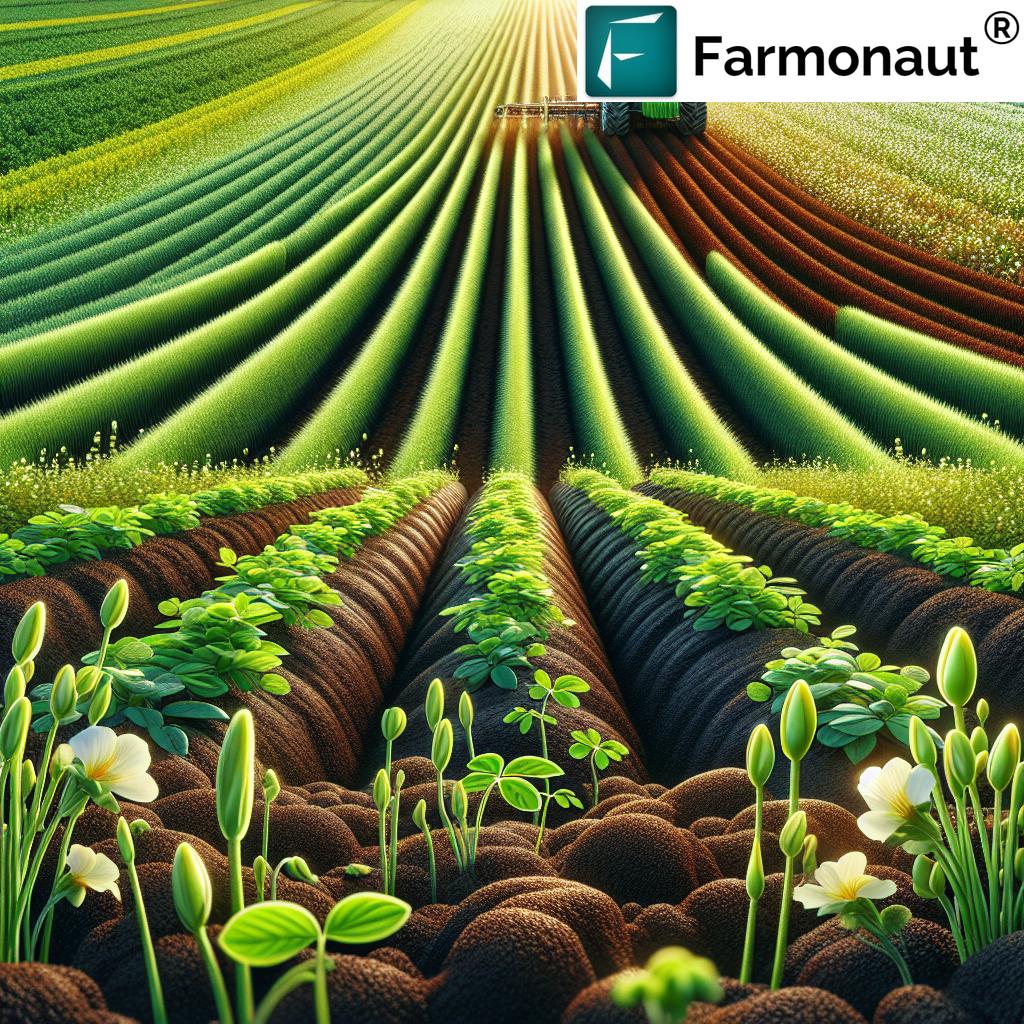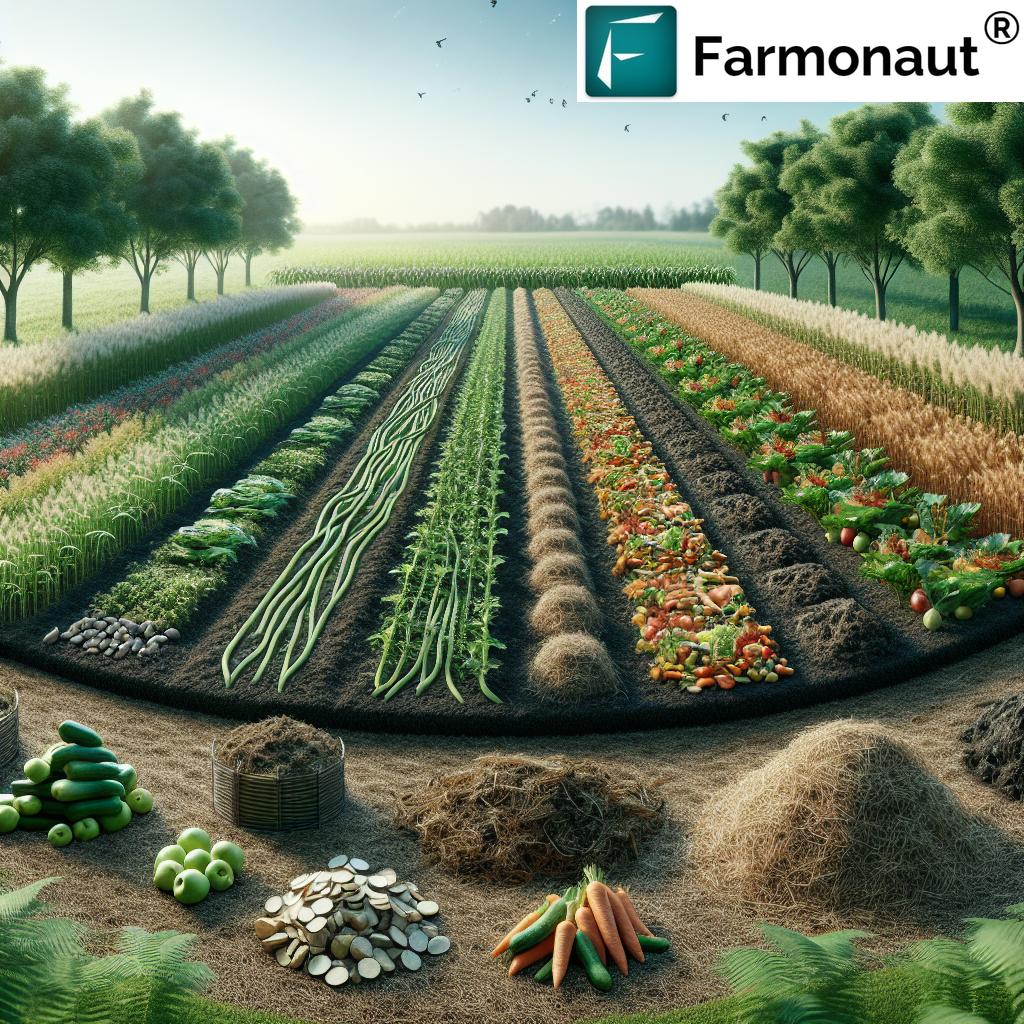Global Food Security: 7 Shocking Ways to Boost Farming
“Agroforestry can increase crop yields by up to 56% while improving soil health and biodiversity.”
Table of Contents
- Introduction: The State of Global Food Security
- Understanding the Challenges: Food Security and Climate Change
- 1. Embracing Climate-Smart Agriculture (CSA)
- 2. Agroforestry: Integrating Trees and Crops for Resilience
- 3. Leveraging Digital Technologies in Agriculture
- 4. Satellite Imagery for Farming: Data-Driven Insights
- 5. Sustainable Forestry Management for Climate Change
- 6. Restoration Initiatives for Rural Communities
- 7. Shaping Policy for Sustainable Agriculture Practices
- Comparative Benefits Table
- Farmonaut: Pioneering Digital Tools for Food Security
- Frequently Asked Questions (FAQ)
- Conclusion: Building a Resilient Future
Introduction: The State of Global Food Security
In the modern era, global food security sits at the intersection of urgency and innovation. Our expanding world population and rising environmental challenges demand immediate attention and strategic change across agricultural, forestry, and rural development sectors. According to recent assessments, nearly 815 million people face hunger globally—an 11% rise in the past decade, largely attributed to conflicts, climate change shocks, and widening economic disparities. The UNFCCC and World Bank warn that without robust intervention, climate change could push another 100 million people into extreme poverty by 2030, most affected through disruptions in agriculture and rural communities.
To ensure food security for all, we must adopt sustainable agriculture practices that simultaneously boost productivity, enhance resilience, and reduce negative environmental impacts. This journey calls for a collective commitment—where farmers, agroforestry experts, technologists, and policymakers unite for a more sustainable and equitable food system.
“Climate-smart agriculture could help feed 9.7 billion people by 2050, ensuring global food security.”
Understanding the Challenges: Food Security and Climate Change
At its core, global food security involves ensuring that all people, at all times, have access to enough safe, nutritious food for an active and healthy life. However, the path to food security is riddled with barriers:
- Climatic shocks: Extreme weather events, prolonged droughts, and erratic rainfall patterns disrupt crop production, particularly in vulnerable rural communities.
- Soil degradation and loss of biodiversity threaten agricultural sustainability, reducing the natural fertility and productivity of our lands.
- Economic disparities: Unequal access to resources, technology, and markets particularly disadvantages smallholder farmers.
- Deforestation and unsustainable forestry management practices destabilize local ecosystems, increasing greenhouse gas emissions and limiting access to forest-based food resources.
- Poor government support and policies hinder the adoption of innovative, integrated management systems.
The Global Imperative: Why We Must Act Now
As the global population is projected to surpass 9.7 billion by 2050, food demand is surging, while available arable land is shrinking due to urbanization, land degradation, and climate change. Without immediate, integrated action in agricultural and forestry systems, our food production will not keep pace, risking a serious humanitarian crisis. Sustainability is no longer an option—it is a necessity.
7 Shocking Ways to Boost Farming for Global Food Security
Addressing global food security requires a multifaceted approach. Here are seven impactful strategies, encompassing climate smart agriculture, agroforestry benefits, technological innovations, and digital tools for sustainable agriculture practices to revolutionize farming worldwide:
1. Embracing Climate-Smart Agriculture (CSA)
What is Climate-Smart Agriculture?
Climate-Smart Agriculture (CSA) is an integrated agriculture strategy designed to transform and reorient farming systems to effectively support food security, resilience, and climate change adaptation. According to Wikipedia, CSA aims to:
- Boost agricultural productivity sustainably and increase income for farmers
- Enhance adaptation and resilience against climatic variability and shocks
- Reduce and/or remove greenhouse gas emissions wherever possible
The adoption of CSA practices may involve diversified cropping, improved irrigation systems, resilient seed varieties, and innovative soil management strategies. These methods support both large-scale and smallholder farmers in adapting to adverse conditions, thus maintaining and improving food production despite mounting environmental hurdles.
How Does CSA Address Food Security & Climate Change?
By prioritizing productivity, resilience, and mitigation, climate-smart agriculture creates a feedback loop: increased yields and improved resilience to droughts or floods protect rural communities and urban populations alike from food crises. CSA also encourages the use of digital tools and satellite imagery for farming to make data-driven decisions at the farm level.
Examples of CSA Practices:
- Crop rotation and diversification
- Efficient irrigation and water harvesting systems
- Improved organic and mineral fertilization techniques
- Climate-resilient crop varieties
- Agroecological pest and disease management
The Impact
The impact of adopting climate-smart agriculture is profound. Not only does it reduce vulnerability to climate extremes, but it also promotes sustainable agriculture practices that safeguard future food supplies for our growing population.
2. Agroforestry: Integrating Trees and Crops for Resilience
Agroforestry Benefits Explained
Agroforestry involves the integration of trees and shrubs within crop and livestock systems. This innovative practice offers a multitude of benefits beyond basic food production:
- Enhanced soil fertility through organic matter and nitrogen fixation
- Improved biodiversity by creating varied habitats
- Increased water retention and reduced erosion
- Additional income streams from timber, fruits, nuts, or medicinal products
- Micro-climate buffering and increased resilience to climatic shocks
According to the agroforestry benefits literature, the adoption of this approach helps not only rural communities but also contributes significantly to climate change mitigation by promoting carbon sequestration in trees and improving overall ecosystem resilience.
Food Security and Agroforestry
Agroforestry plays a pivotal role in food security by diversifying food sources and enhancing farm sustainability. The resulting improvements in soil structure and fertility, biodiversity, and micro-climate conditions directly boost crop yields and safeguard against market and environmental volatilities.
Agroforestry Impact—By The Numbers
- Can increase crop yields by up to 56% in certain systems
- Promotes restoration of degraded land and supports adaptation to climate change
- Boosts household income and resilience for smallholder farmers
Agroforestry practices are at the core of landscape-scale restoration initiatives for rural communities, essential for reversing land degradation and addressing the climate-food nexus.
3. Leveraging Digital Technologies in Agriculture
The Digital Revolution in Sustainable Agriculture
Digital innovation is rapidly transforming modern agricultural systems. Tools like **satellite imagery**, the **Internet of Things (IoT)**, **blockchain**, and **AI-driven analytics** are central to optimizing farm resource use, minimizing environmental impacts, and improving farm profitability.
- Digital technologies in agriculture make farm operations smarter and more data-driven.
- IoT sensors monitor soil moisture, weather, and pest infestation in real-time—enabling targeted irrigation, fertilizer use, and integrated pest management.
- Blockchain technology enables traceability throughout the food supply chain, increasing transparency and consumer trust.
- AI and satellite data provide predictive analytics for crop yields, disease outbreaks, and weather patterns.
Why the Incorporation of Digital Tools is Essential
Digital tools are leveling the playing field for farmers worldwide, reducing the urban-rural technology gap and making precision agriculture accessible to all. By using applications like the Farmonaut Agro Admin App for large-scale plantation management or fleet monitoring via fleet management tools, agriculture businesses streamline operations and cut costs, promoting sustainability and food security at scale.
- Improve yields with precise recommendations
- Reduce water and chemical inputs
- Lower greenhouse gas emissions through efficient management
Digital transformation also enables satellite-based verification for crop loans and agricultural insurance, removing paperwork and reducing the risk of fraud.
4. Satellite Imagery for Farming: Data-Driven Insights
Why Satellite Imagery is a Game-Changer
The use of satellite imagery for farming empowers us to monitor vast agricultural landscapes in real time, providing unparalleled insights into crop health, soil moisture, and pest threats. By accessing multispectral imagery and environmental data, both smallholder and large-scale farmers can:
- Detect crop health problems early (e.g., pest infestation, disease, water stress)
- Prioritize interventions and optimize input usage
- Accurately estimate yield potentials and monitor field performance
Farmonaut’s Contributions in Satellite-Based Monitoring
Farmonaut is leading this sector by offering affordable satellite-based farm management solutions via:
- Real-time crop health monitoring (NDVI, SAVI, etc.)
- Soil moisture analytics to prevent under or over-irrigation
- Blockchain traceability for supply chain transparency
- AI-driven advisory through the Jeevn AI platform
These solutions are accessible to users globally via Android, iOS, and web/browser apps, and can be integrated into third-party platforms through the Farmonaut Satellite API and the Developer Docs.
Key Advantages
- Early warning systems enable preventive rather than reactive management
- Minimized resource wastage, reducing overapplication of water and chemicals
- Enhanced field-level decision-making supporting both productivity and environmental sustainability
- Lower marginal costs for farm monitoring compared to traditional scouting
With satellite imagery and digital insights, even remote or fragmented farms can now benefit from sophisticated precision agriculture, greatly improving global food security and climate resilience for rural communities around the world.
5. Sustainable Forestry Management for Climate Change
Why Forestry Matters for Food Security
Healthy forests are essential for maintaining ecological balance, supporting biodiversity, and anchoring food and water systems. Forestry management for climate change directly impacts food security by:
- Providing wild foods, fruits, nuts, and medicinal plants to rural communities
- Supporting pollinator habitats essential for crop production
- Regulating water cycles and reducing erosion
- Sequestering carbon, thereby mitigating greenhouse gas emissions
Sustainable Forest Management in Practice
Sustainable forest management involves regulating harvests, protecting old growth, supporting reforestation, preventing illegal logging, and fostering community-led initiatives. This balanced approach ensures that our forests continue to deliver vital services without depletion. For organizations seeking to monitor and minimize their own climate footprint, tools like Farmonaut’s Carbon Footprinting Solution provide real-time emissions tracking and actionable insights for more eco-conscious agricultural development.
Key Outcomes
- Long-term food supply through preserved ecosystem services
- Greater resilience of agroecosystems to climate shocks
- Direct contribution to climate mitigation and environmental protection
6. Restoration Initiatives for Rural Communities
The Power of Land and Forest Restoration
Restoration initiatives for rural communities are global efforts aimed at renewing and revitalizing degraded land, often focusing on the synergy between forestry and agriculture. Projects like the African Forest Landscape Restoration Initiative (AFR100) focus on:
- Restoring soil fertility, improving yield potential, and reviving ecosystem functions
- Increasing employment and livelihood opportunities in rural areas
- Sequestering carbon and conserving biodiversity
- Reducing vulnerability to climate change by stabilizing landscapes
How Restoration Initiatives Improve Food Security
By integrating restoration initiatives with agriculture and forestry management, we enable rural communities to regain their productive potential, reduce risk, and ensure a reliable food supply even in the face of climate instability. Restoration, encompassing reforestation, agroecology, and sustainable intensification, offers a sustainable path to long-term food security.
7. Shaping Policy for Sustainable Agriculture Practices
Effective Policy & Economic Support
Robust policies and economic incentives lay the foundation for large-scale adoption of sustainable agriculture and forestry management. The United Nations Decade of Family Farming (UNDFF) exemplifies how supporting family farms underpins food security, rural development, gender equality, and poverty reduction.
- Direct subsidy programs for climate-smart inputs
- Education on innovative and integrated farming methods
- Reform of land tenure to enable secure long-term investments
- Market access facilitation for smallholder and family farmers
- Insurance and risk management innovations to cushion against climate shocks
Policies must also encourage the adoption of digital technologies in agriculture, support restoration initiatives, enforce sustainable forestry management, and incentivize carbon sequestration. In doing so, we unlock transformative change in food production and sustainable land management worldwide.
Comparative Benefits Table: How Sustainable Practices Boost Food Security
| Sustainable Practice | Description | Estimated Yield Increase (%) | Resource Use Reduction (%) | Climate Resilience Benefit |
|---|---|---|---|---|
| Climate-Smart Agriculture (CSA) | Integrated approach to productivity, resilience, and emissions reduction | 10–30 | 25–50 | High—simultaneously adapts, mitigates, and builds resilience |
| Agroforestry | Integrating trees/shrubs in farming systems for stability & diversity | 20–56 | 30–60 | Very High—restores soil, water cycles, biodiversity |
| Digital Technologies | AI, IoT, blockchain, and data analytics for precision farming | 10–40 | 15–45 | High—early warnings, adaptive management |
| Satellite Imagery | Remote monitoring for crop health, yield, soil, and resource use | 10–35 | 20–50 | High—real-time adaptation, disaster mitigation |
| Sustainable Forestry Management | Balanced harvests, protected biodiversity, carbon sequestration | 5–25 | 10–30 | Very High—increased ecological stability |
| Restoration Initiatives | Rehabilitating degraded landscapes for productivity and resilience | 15–40 | 20–40 | Very High—restoration boosts overall food systems |
| Policy & Economic Support | Subsidies, insurance, education, market access for farmers | Varies (10–30+) | Varies (15–40) | High—enables widespread adoption of sustainable practices |
Farmonaut Subscription Plans
Access affordable, real-time crop health monitoring, AI farm advisory, blockchain traceability, and resource management tools with Farmonaut’s flexible plans. Choose the right package for your individual farm, agribusiness, or organization:
Farmonaut: Pioneering Digital Tools for Food Security & Sustainability
Farmonaut is at the forefront of the precision agriculture revolution, making advanced technologies accessible for all categories of farmers, agribusinesses, and government institutions globally. Let’s review how Farmonaut helps overcome the key challenges in sustainable agriculture practices:
- Real-time Satellite-Based Crop Health Monitoring: By leveraging multispectral satellite imagery (NDVI and more), Farmonaut empowers users by detecting crop health issues, optimizing irrigation, and identifying pest threats—leading to significantly improved productivity.
- Jeevn AI Advisory System: This personalized AI-driven farm advisory analyzes satellite, weather, and soil data to deliver actionable recommendations, tailored to local conditions, supporting smarter resource and input management.
- Blockchain-Based Traceability: Farmonaut’s platform supports traceability throughout the agricultural supply chain. This ensures product authenticity and transparency, building consumer trust and reducing the risk of fraud.
- Fleet and Resource Management: Using fleet management solutions, users can track and optimize agricultural machinery logistics with real-time geo-fencing and cost minimization.
- Carbon Footprinting: Environmental monitoring is critical for modern agriculture. Farmonaut’s carbon footprinting tool helps businesses quantify, track, and report greenhouse gas emissions to support green certification and compliance.
- Land Use & Forest Advisory: Offering solutions across crop, plantation, and forestry management, Farmonaut brings together real-time monitoring and AI advisory for integrated environmental sustainability.
- Crop Loan & Insurance Verification: Accurate, satellite-based reporting for crop loans and insurance de-risks lending/insurance operations, helping smallholder farmers access capital more efficiently.
- Scalable Platform & API Access: The fully featured web/mobile apps and robust API and developer docs offer customizability and integration possibilities for organizations and researchers.
By choosing Farmonaut, users can drastically improve their agricultural productivity, reduce resource wastage, and advance on the pathway towards environmental sustainability and food system resilience.
Frequently Asked Questions (FAQ)
1. What is the role of climate-smart agriculture (CSA) in food security?
CSA helps farmers adapt to climatic challenges, raise productivity, and reduce greenhouse gas emissions—all of which are essential to building a more resilient and sustainable agricultural system.
2. How does agroforestry support environmental sustainability?
Agroforestry improves soil fertility, increases biodiversity, stabilizes micro-climates, and creates multiple income streams for farmers, which, in return, supports both food security and environmental goals.
3. Why are digital technologies in agriculture important now?
Digital tools, including IoT sensors, satellite imagery, and AI analytics, allow for precise monitoring and adaptive management, boosting yields and cutting unnecessary resource use. This makes modern agriculture more efficient, sustainable, and climate-resilient.
4. Can smallholder farmers afford satellite-based farm management?
Yes. Platforms like Farmonaut make precision agriculture affordable and accessible, offering scalable subscription plans for both individual and commercial-scale farms. No expensive hardware is required—only a smartphone or computer is needed.
5. What is sustainable forestry management?
It’s an approach that balances timber production, biodiversity protection, carbon sequestration, and the sustainable provisioning of forest goods to local communities, supporting overall climate and food security goals.
6. How do restoration initiatives help rural communities?
Restoration projects revive degraded land, restore fertility, support biodiversity, and provide both environmental and economic opportunities—empowering rural communities to adapt and thrive.
7. Where can I learn more or start using Farmonaut’s solutions?
Try Farmonaut’s web, Android, or iOS apps today. For large organizations or developers, access comprehensive APIs and documentation directly through these links:
Conclusion: Building a Resilient Future for Food Security
Global food security demands a holistic, integrated strategy that connects sustainable agriculture practices, forestry management for climate change, technological innovations, and policy support. The seven transformative approaches explored in this blog—rooted in science, technology, and sustainability—offer a blueprint for building resilient agricultural systems capable of withstanding the mounting pressures of population growth and climate variability.
The role of digital tools, from satellite imagery for farming to real-time AI advisory and blockchain traceability, is more critical than ever. By embracing climate-smart agriculture, agroforestry, and restoration initiatives, we not only meet present food needs but also secure the foundation for healthy societies and thriving rural communities tomorrow.
Farmonaut stands as a testament to how accessible, affordable technology can empower farmers, agribusinesses, and policymakers alike on the journey to a secure and sustainable food future. Together, let us continue to address today’s challenges and sow the seeds of innovation, resilience, and responsibility for generations to come.








